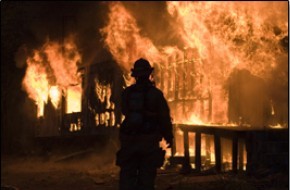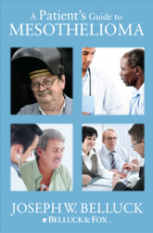Firefighters and Mesothelioma
 In a report released in the American Journal of Industrial Medicine, researchers found that the number of New York firefighters who have taken disability retirement has increased sharply since the terrorist attacks of Sept. 11, 2001. They also found that the increase in post-9/11 accidental disability retirements was primarily due to respiratory-related illnesses. About 400 tons of asbestos were used in the towers, and upon their collapse, asbestos and other toxic substances such as mercury and lead were released into the air putting workers at risk of mesothelioma and other respiratory diseases.
In a report released in the American Journal of Industrial Medicine, researchers found that the number of New York firefighters who have taken disability retirement has increased sharply since the terrorist attacks of Sept. 11, 2001. They also found that the increase in post-9/11 accidental disability retirements was primarily due to respiratory-related illnesses. About 400 tons of asbestos were used in the towers, and upon their collapse, asbestos and other toxic substances such as mercury and lead were released into the air putting workers at risk of mesothelioma and other respiratory diseases.
Medical researchers are now seeing unusually high incidences of respiratory issues and lung scarring in Ground Zero workers. In fact, a study published in the New England Journal of Medicine on April 8, 2010, found: “Exposure to World Trade Center dust led to large declines in FEV1 (forced expiratory volume) for FDNY rescue workers during the first year. Overall, these declines were persistent, without recovery over the next 6 years, leaving a substantial proportion of workers with abnormal lung function.”
Experts worry that the workers’ reduced lung health and capacity will increase their potential for developing mesothelioma and other asbestos-related diseases in the coming years. Mesothelioma, an incurable, asbestos-caused cancer, typically has an incubation period of several decades. However, there has already been at least one case of mesothelioma among the rescue workers.
Researchers from the Albert Einstein College of Medicine and the New York University Langone Medical Center set out to “examine the effect of the World Trade Center (WTC) attack” on the New York City Fire Department (FDNY) members that were first responders and assisted in the ongoing recovery efforts.
The authors reported that in the seven years before 9/11, 48% (1,571) of the 3,261 New York firefighters who retired took accidental disability retirements. In the seven years after 9/11, 4,502 firefighters retired and 66% (2,970) were accidental disability retirements, nearly half of which were related to injuries or illness from the World Trade Center attacks. Researchers also found that the pension benefits associated with WTC-related retirements have placed a “financial burden of over $826 million on the FDNY pension system.”
The researchers concluded that the “WTC attacks affected the health of the FDNY workforce resulting in more post-9/11 retirements than expected.”
The James Zadroga 9/11 Health and Compensation Act signed in January provides medical care and compensation to rescue workers and others harmed by the toxic dust after the 2001 terrorist attacks. The measure is designed to provide health benefits and compensation to many of the rescue workers that are at risk for asbestos-related diseases, including mesothelioma and respiratory disease, from inhaling the noxious cloud of dust at Ground Zero.
9/11 Health Bill
Many New York firefighters and rescue personnel have suffered respiratory problems as a result of the dust they breathed while risking their lives to help others on 9/11. It’s only fitting that we as a country now help these emergency responders with monitoring, treatment and health services.
The 9/11 Health Bill, that would provide up to $7.4 billion in aid to early responders of the 9/11 terrorist attacks, is critical for the nation to show support to the workers whose health was devastated by working in the toxic wreckage of the World Trade Center at Ground Zero. Rescue workers are now facing the risk of asbestos-related diseases, including mesothelioma and respiratory disease, from inhaling the noxious cloud of dust containing asbestos and other toxic substances such as mercury and lead.
The legislation would establish a monitoring and treatment program, including mental health services, for first responders and New Yorkers who were exposed to the toxic dust.
Mesothelioma, a rare form of cancer primarily caused by exposure to airborne asbestos fibers, typically affects the lining of the lungs. Most cases of mesothelioma are diagnosed 30 years or more after exposure. The latency period can be as long as 50 years.
Given the long latency period of diseases such as mesothelioma, it’s fair to say we will see more serious health effects from 9/11 for decades to come. Establishing comprehensive monitoring and treatment programs to address the serious health concerns while they are in the early stages is the right thing to do.


